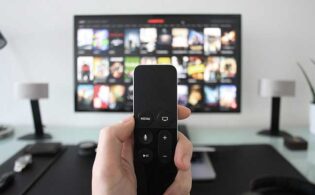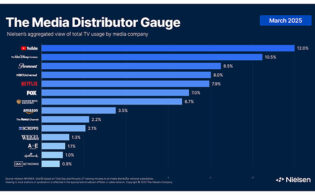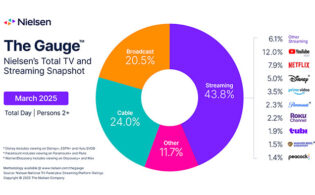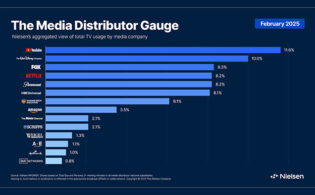NEW YORK: Most consumers have no plans to become cord cutters, with viewers worldwide choosing to supplement traditional TV rather than leave it, according to new Nielsen findings.
Data shows that, despite a rapidly evolving media landscape, traditional TV is still the preferred platform around the world. Just over one-quarter of global online respondents (26 percent) say they pay to watch broadcast or VOD programming via subscription to an online-service provider such as Hulu, Netflix or Amazon, compared with 72 percent who say they pay to watch via a traditional TV connection. North America and Asia-Pacific lead the way, with 35 percent of respondents in North America and 32 percent in Asia-Pacific stating that they pay an online-service provider for programming content.
Nielsen finds that self-reported usage in Europe is well below the global average, with a response rate of 11 percent. Meanwhile, just over one-fifth of online respondents in Latin America and the Middle East and Africa say they subscribe to an online-service provider (21 percent each).
“Today’s media landscape is complex, but the growth of video-on-demand programming services can create opportunities for all players in the media ecosystem,” said Megan Clarken, the president of Nielsen Product Leadership. “For audiences, advertisers and content providers alike, advantage will be gained with an in-depth and keen understanding of not just how consumer viewing dynamics are changing, but why they are changing. Two things were never truer than they are today: Content will always be king, and consumers will continue to demand greater control and customization of the viewing experience. Providers who exceed standards on both fronts will have an advantage.”
While the majority of respondents in the global online survey (68 percent) say they have no plans to cancel their existing traditional service in favor of an online-only service, almost one-third (32 percent) say they plan to cut the cord. Responses were highest in Asia-Pacific, where 44 percent of respondents state they plan to cancel their cable or satellite service for an online-only service. Less than one-quarter of Latin American (24 percent), North American (22 percent) and European (17 percent) respondents have plans to cancel.
However, according to a recent Nielsen study in the U.S, only a very small percentage of those who expressed a desire to drop their multichannel cable and satellite TV service actually did so.
“The increasing popularity of online-only video services will continue to put pressure on networks and cable and satellite TV providers, but a substantial replacement of one for the other is unlikely,” said Clarken. “While some consumers are cutting back on traditional TV services, many aren’t severing the cord completely. For most viewers, online and traditional services are not mutually exclusive, but complementary. Moreover, online-only services, networks and multichannel video-programming distributors face many of the same challenges, including rapidly evolving consumer preferences, an overabundance of choice and rising content costs. In the near term, cord shaving is likely the biggest threat as consumers evaluate the benefit of premium services or networks and consider slimmer channel packages that provide a better match for both preferences and wallets.”






